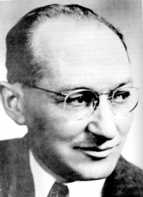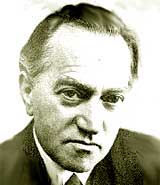Kurt Lewin
Gestalt Psychology, even though it no longer survives as a separate entity, has had an enormous impact. Two people in particular lead the way in introducing it into other aspects of psychology: Kurt Goldstein and Kurt Lewin.
Kurt Lewin was born September 9, 1890, in Mogilno, Germany. He received his PhD from the University of Berlin under Stumpf. After military service, he returned to Berlin where he worked with Wertheimer, Koffka, and Köhler.
He went to the U.S. as a guest lecturer at Stanford and Cornell, and took a position at the University of Iowa in 1935. In 1944, he created and directed the Research Center for Group Dynamics at MIT. He died in 1947, just beginning his work there.
Lewin created a topological theory that expressed human dynamics in the form of a map representing a person’s life space. The map is patterned with one’s needs, desires, and goal, and vectors or arrows indicated the directions and strengths of these forces — all operating as a Gestalt.
This theory inspired any number of psychologists in the U.S., most particularly those in social psychology. Among the people he influenced were Muzafer Sherif, Solomon Asch, and Leon Festinger.
Kurt Goldstein
The other person was Kurt Goldstein. Born in 1878, he received his MD from the University of Breslau in 1903. He went to teach at the Neurological Institute of the University of Frankfurt, where he met the founders of Gestalt psychology.
He went to Berlin to be a professor there, and then went on to New York City in 1935. There, he wrote The Organism in 1939, and later Human Nature in the Light of Pathology in 1963. He died in 1965.
Golstein developed a holistic view of brain function, based on research that showed that people with brain damage learned to use other parts of their brains in compensation. He extended his holism to the entire organism, and postulated that there was only one drive in human functioning, and coined the term self-actualization. Self-preservation, the usual postulated central motive, he said, is actually pathological!
Goldstein and his idea of self-actualization influence quite a few young personality theorists and therapists. Among them would be Gordon Allport, Carl Rogers, and Abraham Maslow, founders of the American humanistic psychology movement.